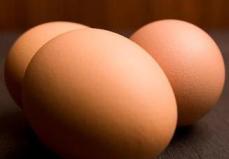H1N1 vaccine production in chicken eggs too slow

Vaccines today are made the same way they’ve been made for half a century, with a reliance on millions of chicken eggs to grow the virus. Some insist they could have made enough pandemic flu vaccine by now, reports ABC News.
“We need more information from the government, and we need to act now to find out how we’re going to get enough pandemic flu vaccine to take care of the citizens of this country,” said Sen. John McCain, R-Ariz.
It currently takes approx. 5-6 months to make vaccines using chicken eggs.
Faster, more reliable vaccine production
“There are at least 10-20, maybe even 50 companies that are pursuing different approaches,” said Dr. Arnold Monto of the University of Michigan School of Medicine.
In Meriden, Conn., one company has found a way to use cells from caterpillars to make vaccines.
“It’s a lot like reprogramming your computer. If we tell cells what to make, they make it,” said Dan Adams of Protein Sciences Corp.
The vaccine is grown in vats and then purified. It’s then ready to be injected. The whole process takes about 2 months.
Antiquated production methods
“I wish this had been accelerated 10 years ago. It wasn’t,” Health and Human Services Secretary Kathleen Sebelius told ABC News.
“The government dropped the ball. They should have been funding these new technologies years ago so we could be making vaccines faster today,” said Dr. Greg Poland of the Mayo Clinic.
“Because the US government didn’t provide the funding, and the Australians did,” said Adams.
Fortunately, this pandemic H1N1 flu hasn’t been as bad as it could have been. But it’s awakened many to just how antiquated America’s vaccine production really is.
Source: ABC News
Join 31,000+ subscribers
Subscribe to our newsletter to stay updated about all the need-to-know content in the poultry sector, three times a week. Beheer
Beheer








 WP Admin
WP Admin  Bewerk bericht
Bewerk bericht